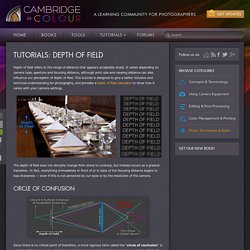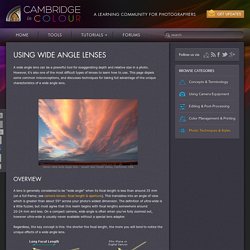

Forty Portraits in Forty Years. Text by SUSAN MINOT Nicholas Nixon was visiting his wife’s family when, “on a whim,” he said, he asked her and her three sisters if he could take their picture.

It was summer 1975, and a black-and-white photograph of four young women — elbows casually attenuated, in summer shirts and pants, standing pale and luminous against a velvety background of trees and lawn — was the result. A year later, at the graduation of one of the sisters, while readying a shot of them, he suggested they line up in the same order. After he saw the image, he asked them if they might do it every year. “They seemed O.K. with it,” he said; thus began a project that has spanned almost his whole career. Rephotographing Atget - Photographs and text by Christopher Rauschenberg. Eugene Atget documented Paris from 1888 until his death in 1927.

Like many people, I consider him to have been the greatest photographer of all time. Atget straightforwardly documented the city with photographs that give you the feeling that all the transitory things that people do and are have washed away, leaving onlytheir transcendent accomplishments. On a 1989 trip to Paris, I suddenly found myself face to face with a spiral-topped gatepost that I knew very well from a beautiful photograph by Atget (the photograph on the left). I rephotographed his gatepost from memory (the photograph on the right) and wondered how many other Atget subjects might still be holding their poses.
Will Wilson. Light & Photography: Exposure and Tonal Range Considerations. In today's article, we're going to delve into some of the thinking and theory behind dynamic and tonal range, exploring what these terms mean and how we can best utilise them in our photography.

Getting to grips with these is an important step to really understanding how your camera works, and learning how to capture a perfect representation of a particular scene. A rich range of tones in a colored, as well as a black and white, image is vital to its success. In digital photography, this is limited to the sensor's dynamic range and its ability to capture a wide enough distribution of tones that would be considered suitable for the purpose of the photo.
Factors that influence tonal range of the final image include subject reflectance as well as the lighting. DOF2. Understanding Depth of Field in Photography. Depth of field refers to the range of distance that appears acceptably sharp.

It varies depending on camera type, aperture and focusing distance, although print size and viewing distance can also influence our perception of depth of field. Using Wide Angle Lenses. A wide angle lens can be a powerful tool for exaggerating depth and relative size in a photo.

However, it's also one of the most difficult types of lenses to learn how to use. This page dispels some common misconceptions, and discusses techniques for taking full advantage of the unique characteristics of a wide angle lens. 16mm ultra-wide angle lens - sunset near Death Valley, California, USA. Using Telephoto Lenses. You've probably heard that telephoto lenses are for enlarging distant subjects, but they're also a powerful artistic tool for affecting the look of your subject.

They can normalize the size and distance difference between near and far objects, and can make the depth of field appear more shallow. Telephoto lenses are therefore useful not only for wildlife photography, but also for landscape photography. Read on to learn techniques for utilizing the unique characteristics of a telephoto lens . . . Light & Photography: Exposure and Tonal Range Considerations. 18 Composition Rules For Photos That Shine. Rules.

When you were a kid, you hated them. You probably still hate at least some of them. For all the good that rules do in our world, they have the ugly side-effect of stifling freedom and individual creativity. And what is photography but a way to express creativity and artistic freedom? There shouldn't be any "rules"! Actually, photography rules are kind of like pirate code. Learn the Skill of Critiquing Photographs With These 5 Tips. Raise your hands if you have had your photos critiqued before.

Now if you have, do you remember receiving feedback that wasn’t too useful? Perhaps it’s because the one giving the feedback didn’t understand your situation. Or perhaps they didn’t understand what you wanted to show. At times people would even say a statements like “It’s nice”, or “It’s okay” without explaining why they like it or why they see it that way. 10 Ways to Critique Your Photos to Improve Your Photography. Introduction I get asked to critique photos all the time now.

I’m happy to do it but I often feel that people’s photography would dramatically improve if they could see for themselves where they’re going wrong. Small things that I would do differently can make a big difference to the end result. The sooner you learn to critique for yourself, the better; you’ll be able to study your photos as you’re taking them instead of getting home and wishing you could go back and redo the shoot. Where is the Visual Weight? This is the first thing you notice when you look at a photo. Ask yourself: where are my eyes immediately drawn? How to Write a Photography Critique: 8 Steps. Edit Article.

Glossary of Digital Photography Terminology. Here you will find some of the more common photography terminology, including specific digital photography terms. Digital Photography Terminology – Aperture Aperture The aperture is the hole inside the lens that allows light through. Aperture is measured in "f" numbers - a ratio of the diameter of the hole and the focal length of the lens. A Glossary of Digital Photography Terms. Sometimes, the phrases, acronyms and strings of numbers or number-letter combinations used to identify photographic hardware or techniques can be daunting to the uninitiated neophyte photographer. We've prepared a list of the basic terms. Have we left any out that you think should be added?
Please let us know! 2K is a 17:9 format, defined by the Digital Cinema Initiatives, is a resolution of 2048 x 1080. Basic Photography Techniques - Perspective. Perspective refers to the relationship of imaged objects in a photograph. This includes their relative positions and sizes and the space between them. In other words, perspective in the composition of a photograph is the way real three-dimensional objects are pictured in a photograph that has a two-dimensional plane. In photography, perspective is another illusion you use to produce photographs of quality composition. When you are making pictures, the camera always creates perspective. Because a camera automatically produces perspective, many novice photographers believe there is no need to know much about it. Linear Perspective. MAKING A MARK: Composition - why tonal values and contrast are important. A walk on the Downs - a work in progresscoloured pencil on Arches HP, 10" x 8"copyright images and text by Katherine Tyrrell "Tonal values are critical.
The lights and darks contribute more to the success of a painting's composition than any other factor, including color. In fact your painting will really only be as good as the tonal values"Greg Albert, The Simple Secret to Better Panting Time and time again when entering a gallery, the painting which stands out from the crowd is the one which has a strong design and value pattern. Exactly the same thing happens when you sit viewing slides entered for a competition. Evaluating Images and Adjusting Photographic Tonal Values. Understanding Digital Camera Histograms: Tones and Contrast. Understanding image histograms is probably the single most important concept to become familiar with when working with pictures from a digital camera.
A histogram can tell you whether or not your image has been properly exposed, whether the lighting is harsh or flat, and what adjustments will work best. It will not only improve your skills on the computer, but as a photographer as well. Each pixel in an image has a color which has been produced by some combination of the primary colors red, green, and blue (RGB).